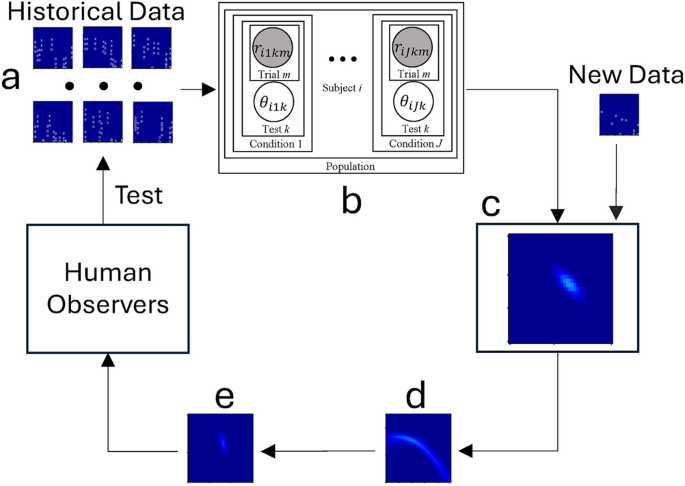Researchers have developed a revolutionary approach to predict the contrast sensitivity function (CSF), a key metric for assessing visual performance. By creating “digital twins” – virtual models that mimic the behavior of real-world visual systems – they can forecast how a person’s vision will change under different conditions, paving the way for more personalized and effective eye care. This innovative technique could significantly reduce the burden of clinical testing, enabling faster diagnosis and optimized treatment for visual impairments. The findings have implications for a wide range of applications, from virtual reality to precision medicine. Contrast sensitivity and digital twins are poised to transform the future of vision assessment and healthcare.

Unlocking the Secrets of Vision with Digital Twins
Vision is a complex and dynamic process, influenced by a myriad of factors. From the structure of the eye to the neural pathways in the brain, understanding how our visual system responds to different stimuli is crucial for maintaining and improving eye health. Enter the concept of “digital twins” – virtual models that can accurately simulate the behavior of their real-world counterparts.
In a groundbreaking study, researchers have leveraged the power of digital twins to predict the contrast sensitivity function (CSF), a critical measure of visual performance. The CSF describes how our eyes perceive and respond to different levels of contrast, or the difference between light and dark areas in an image. By developing these virtual models, the team has paved the way for more personalized and efficient vision assessment and treatment.
Modeling the Complexity of Vision
The key to the researchers’ success lies in their use of a sophisticated mathematical framework known as a hierarchical Bayesian model (HBM). This approach allowed them to capture the intricate relationships between various factors that influence the CSF, including individual differences, environmental conditions, and disease progression.
The HBM works by breaking down the visual system into three levels:
1. The population level, which describes the overall trends and patterns observed across a group of individuals.
2. The subject level, which accounts for the unique characteristics of each individual.
3. The test level, which models the trial-by-trial responses during a visual assessment.
By incorporating these multiple layers of complexity, the researchers were able to create digital twins that could accurately predict how a person’s CSF would change under different lighting conditions, even for individuals who had not been previously tested.
Transforming Vision Assessment and Treatment
The implications of this research are far-reaching. By using digital twins to forecast visual performance, clinicians can now design more personalized and effective treatment plans for patients. Instead of relying on one-size-fits-all approaches, they can tailor interventions to the unique needs of each individual, improving outcomes and reducing the burden of clinical testing.
Moreover, the digital twins can serve as “virtual control groups” in clinical trials, enhancing the statistical power of the studies and accelerating the development of new treatments. This innovative approach has already garnered the attention of regulatory bodies, such as the U.S. Food and Drug Administration and the European Medicines Agency, who have issued guidelines for using digital twins to streamline the evaluation of new technologies.
Towards a Brighter Future for Vision
The development of digital twins for the CSF is just the beginning. As researchers continue to refine and expand this technology, we can expect to see even more breakthroughs in the field of vision science and healthcare. From early detection of eye diseases to personalized vision rehabilitation, the potential of digital twins is limitless.
By harnessing the power of advanced modeling techniques and cutting-edge technology, we are poised to unlock the secrets of the visual system and pave the way for a future where everyone can enjoy the wonders of sight. The journey towards this goal has just begun, and the implications for our understanding of the human body and the pursuit of personalized medicine are truly exciting.
Author credit: This article is based on research by Yukai Zhao, Luis Andres Lesmes, Michael Dorr, Zhong-Lin Lu.
For More Related Articles Click Here
